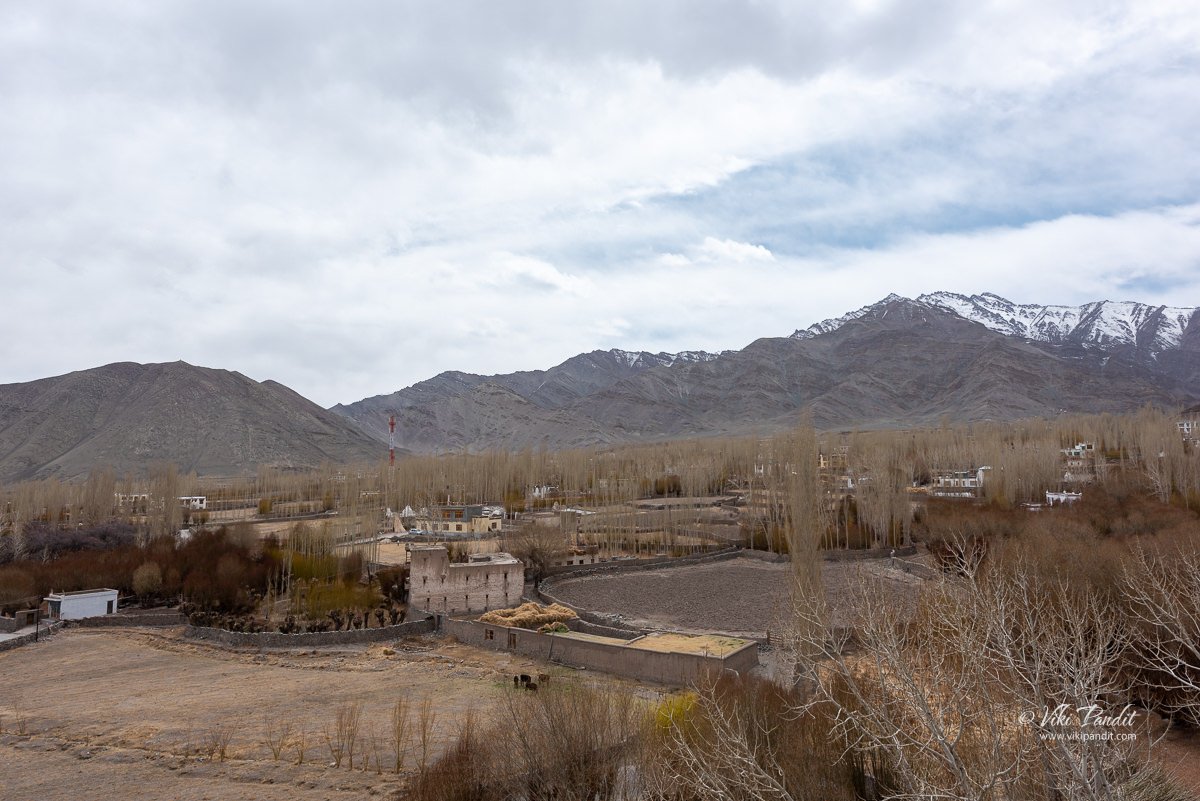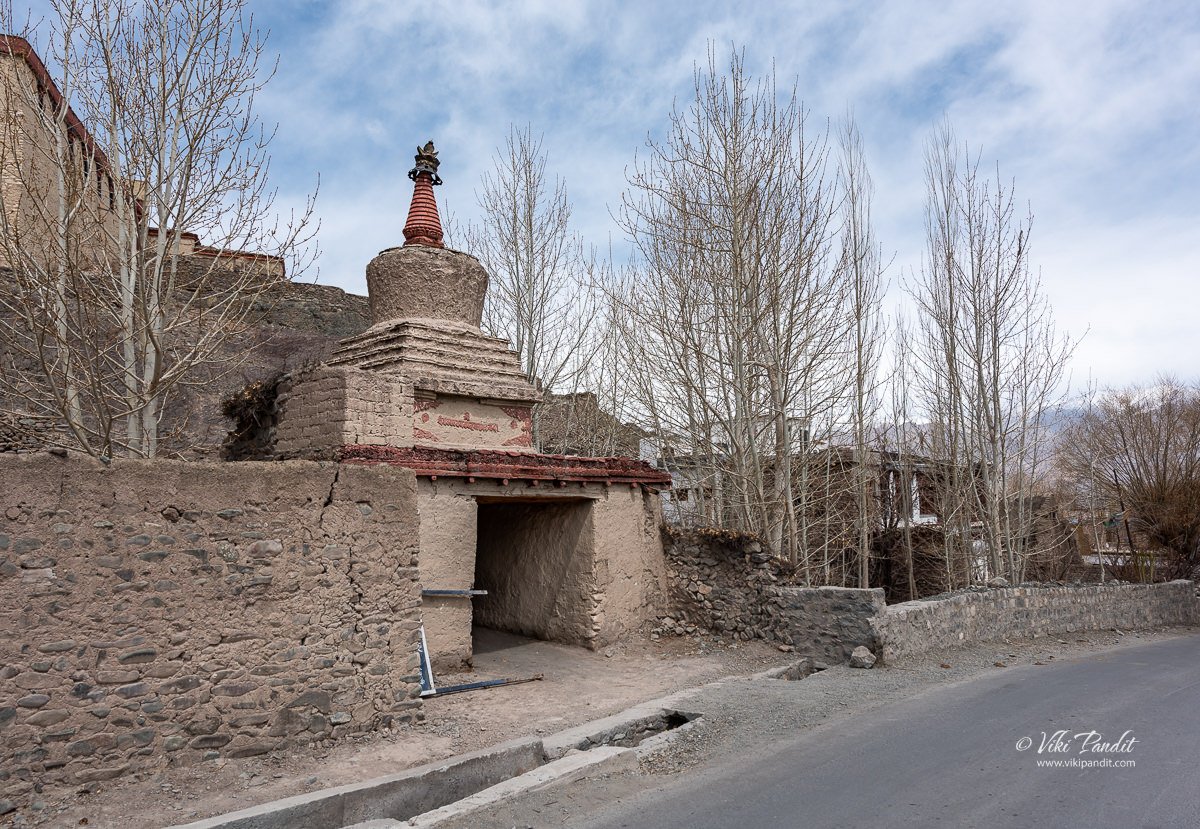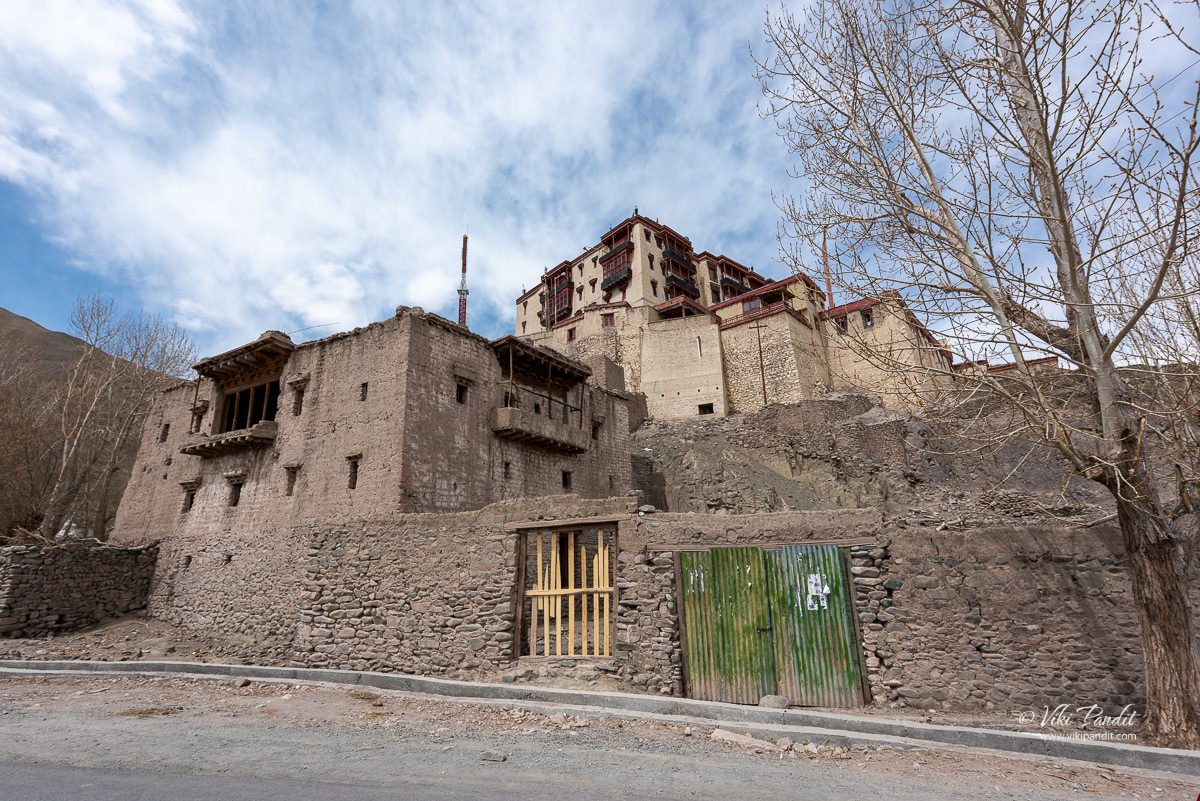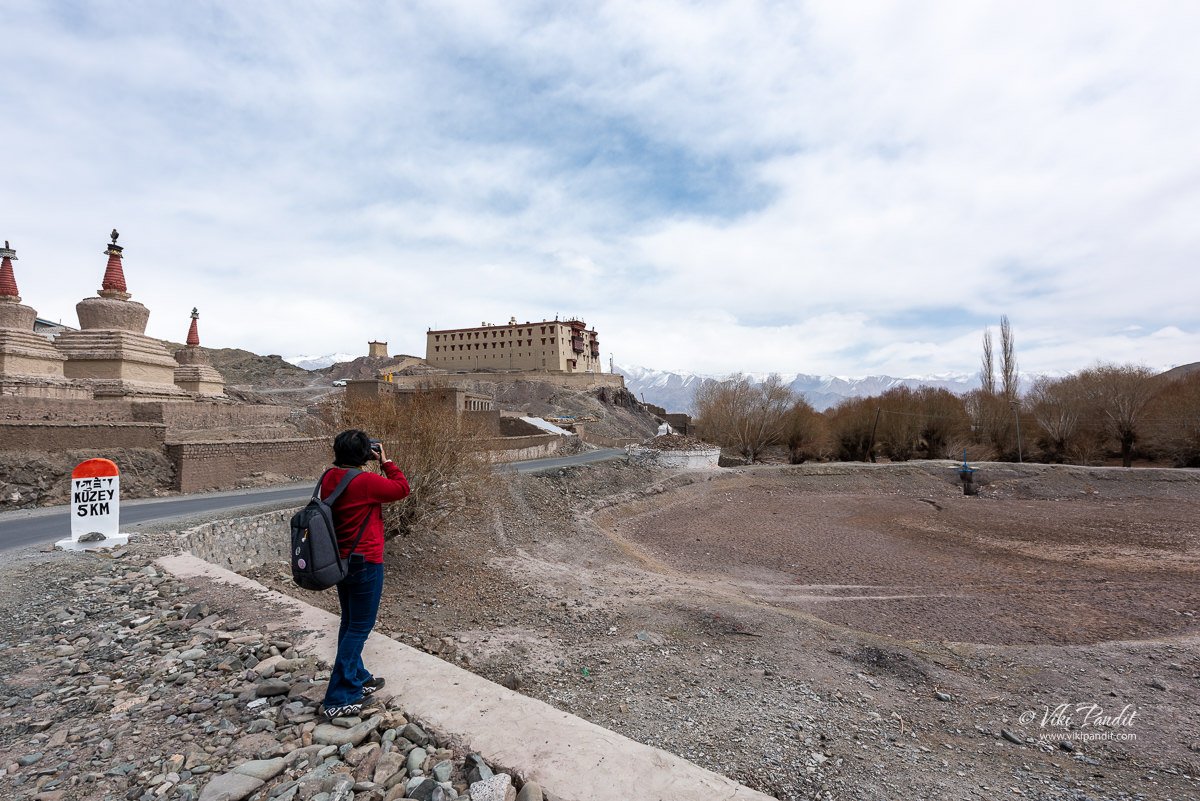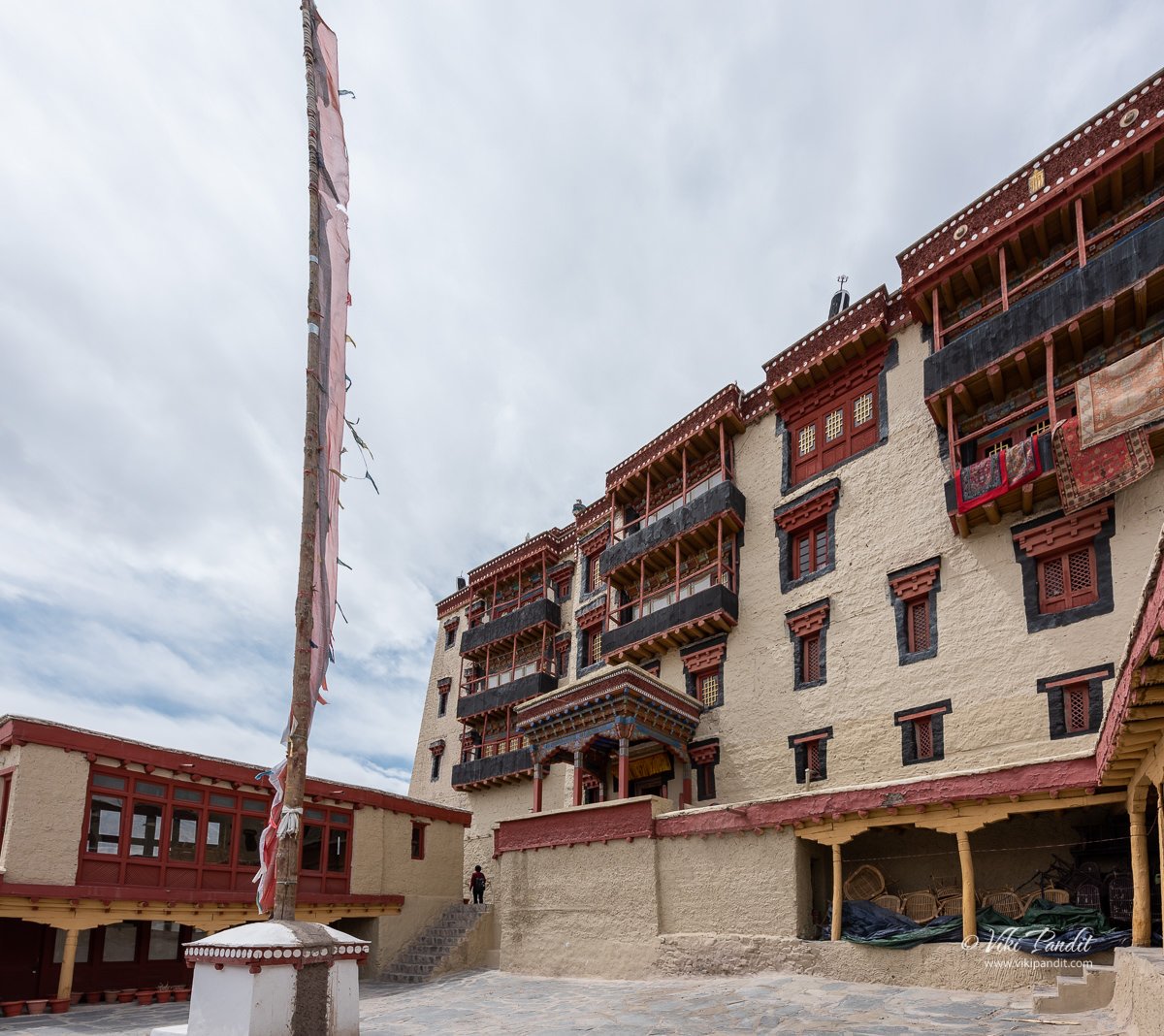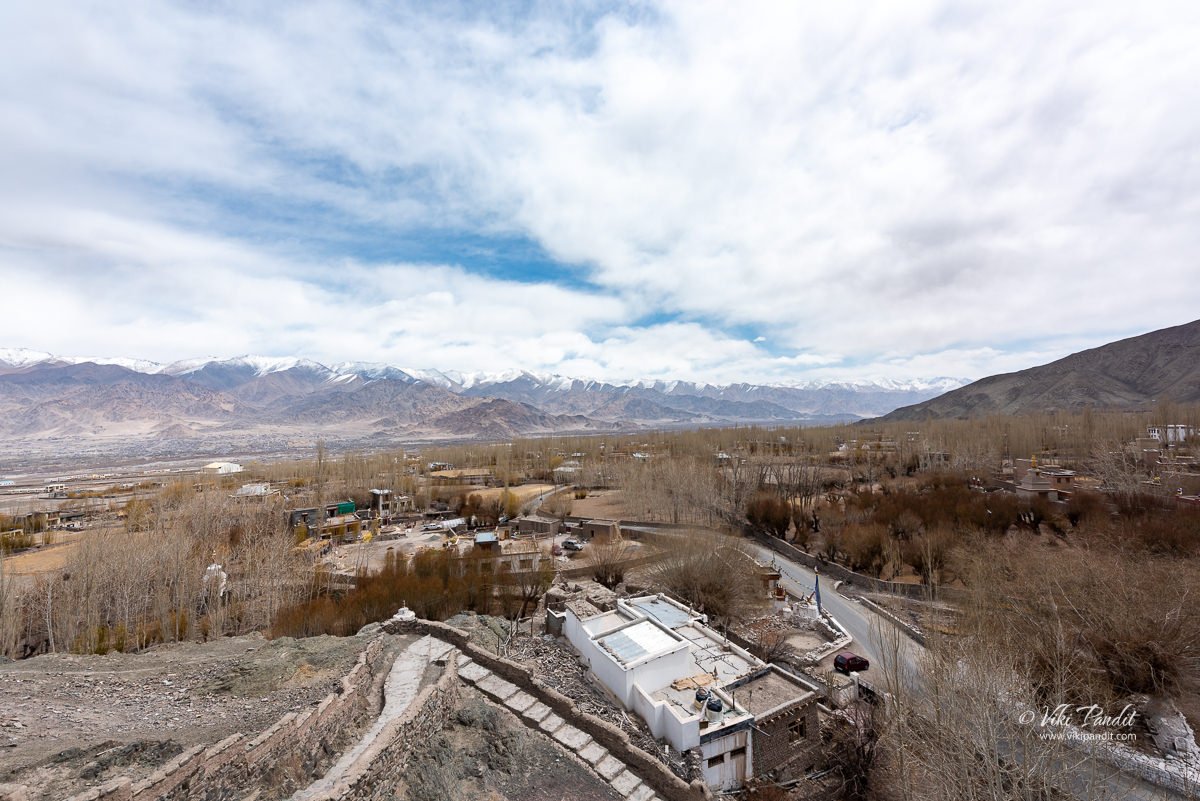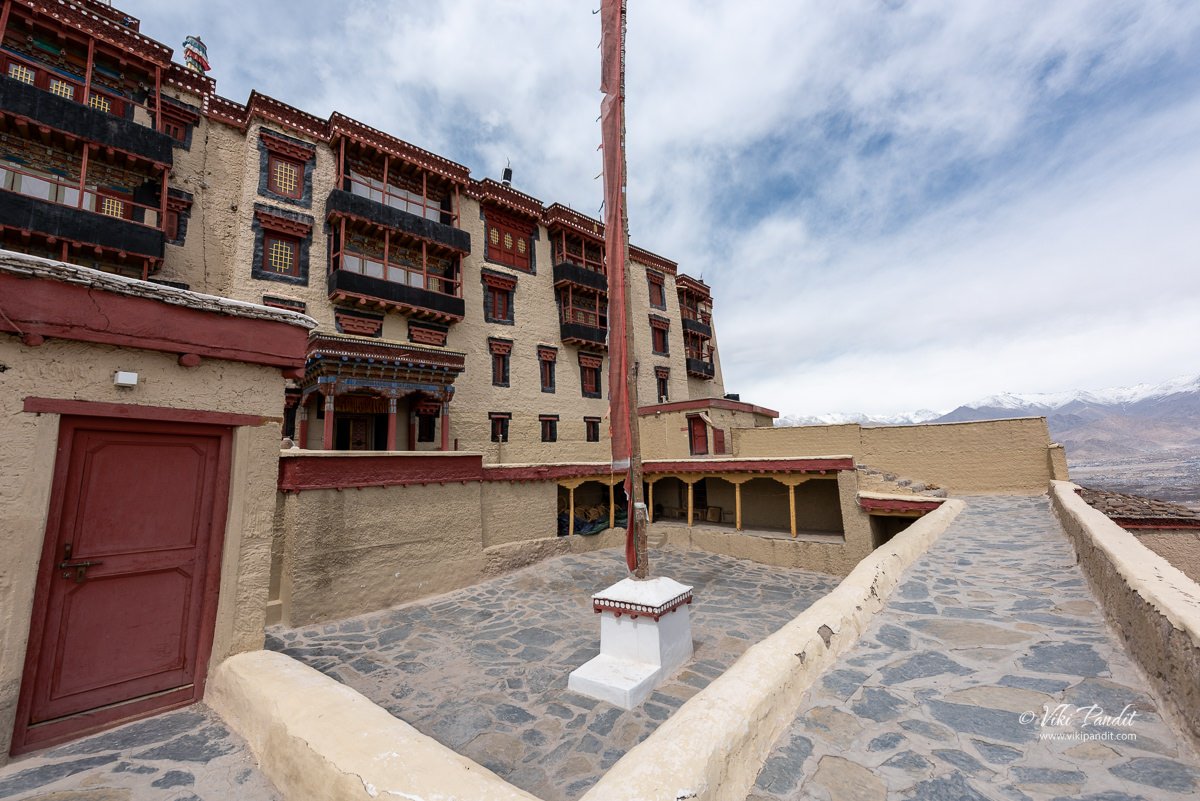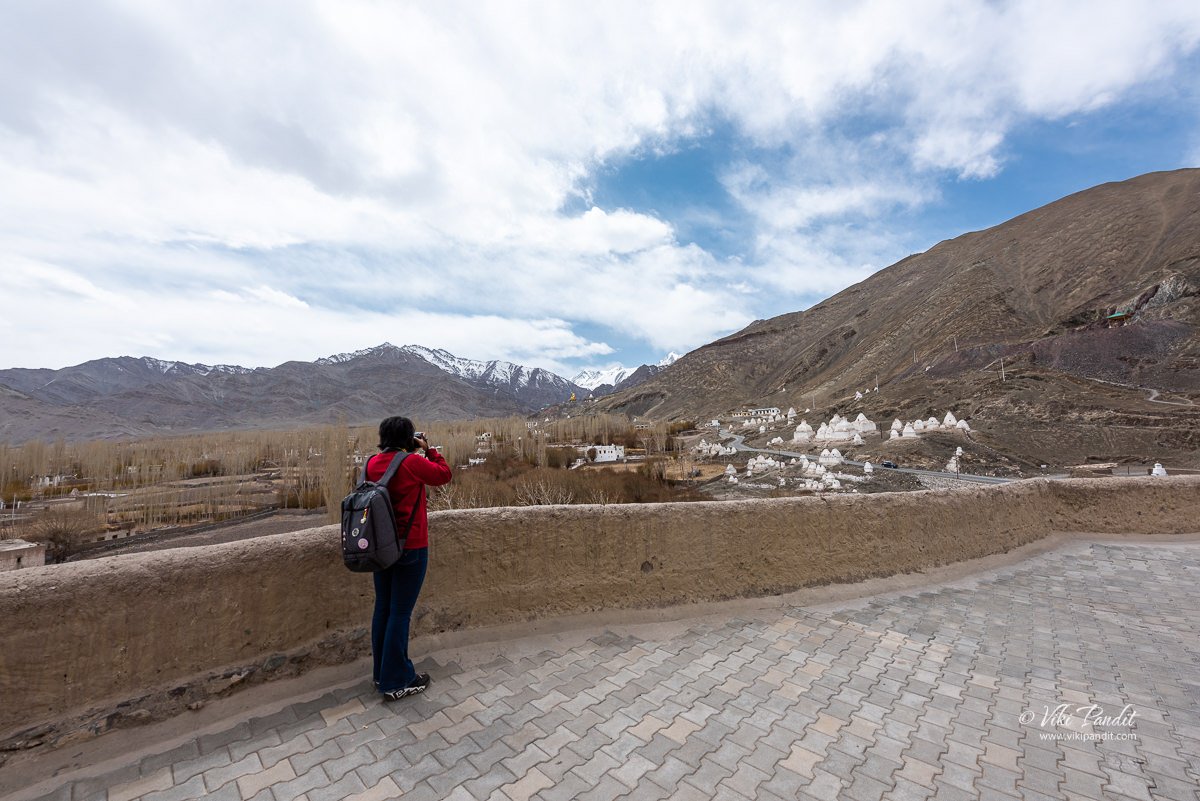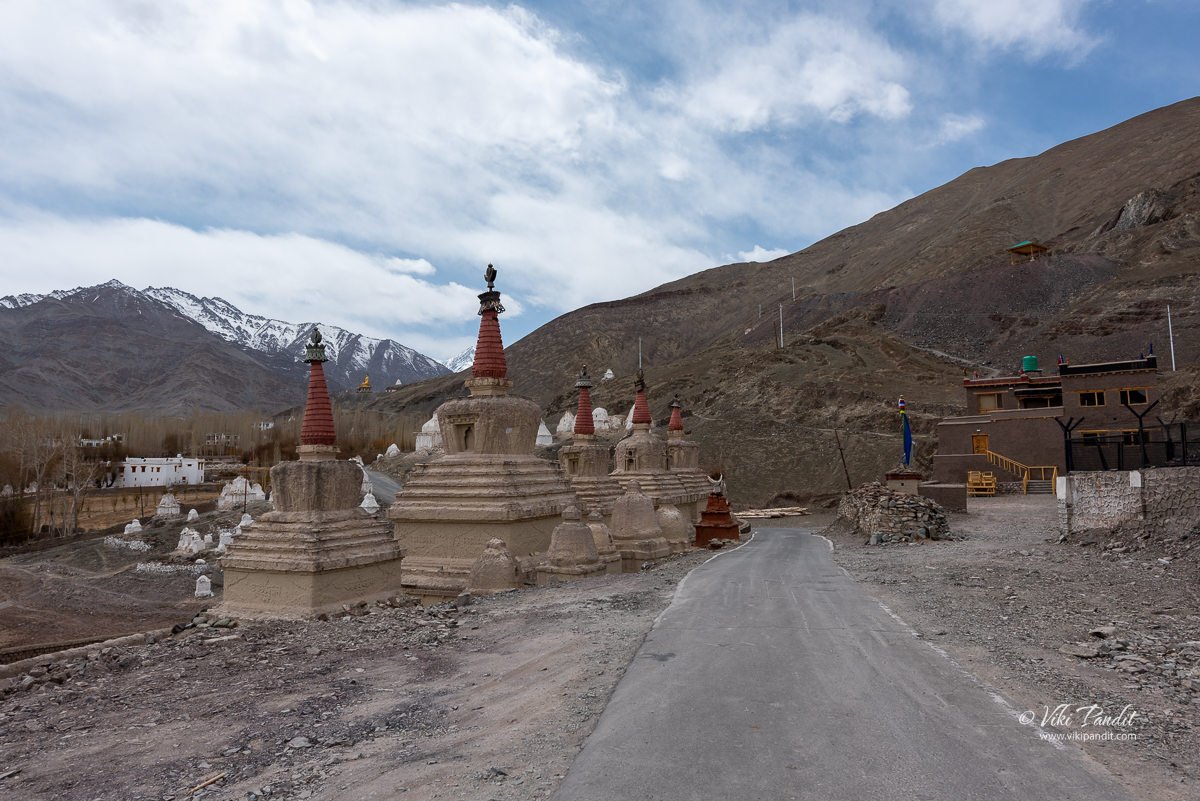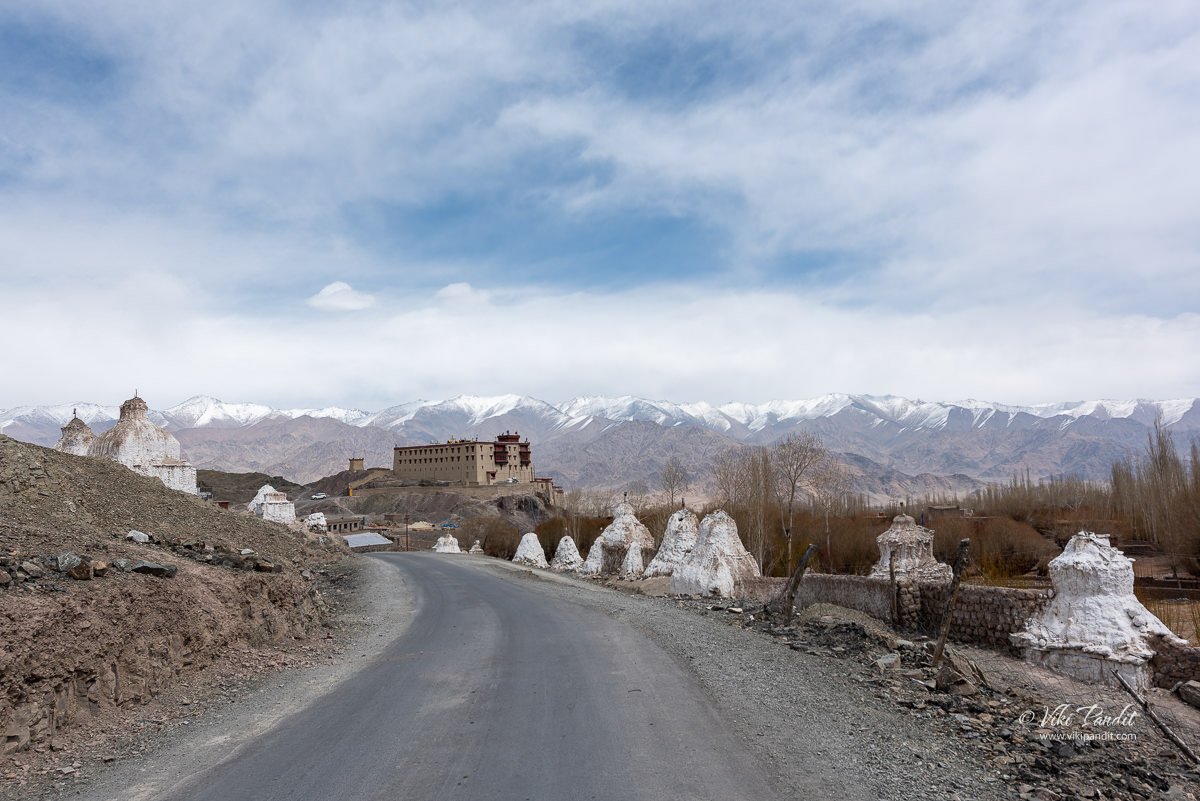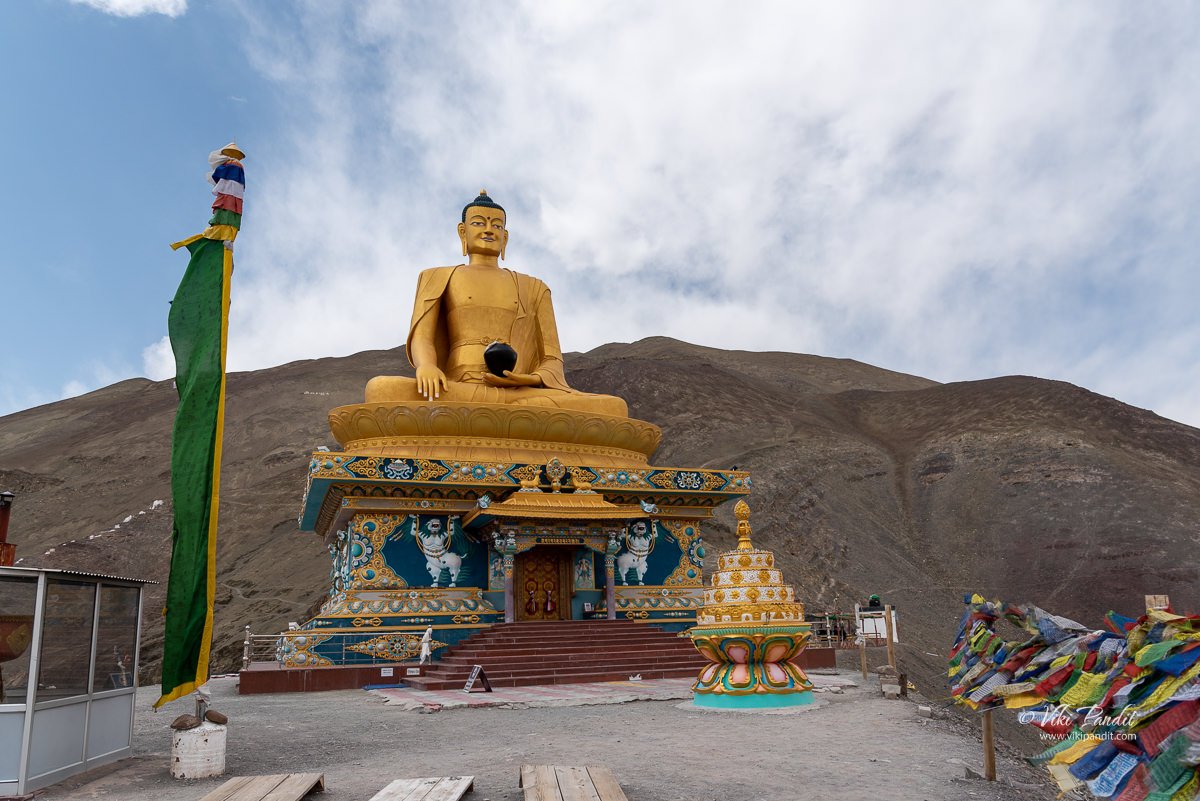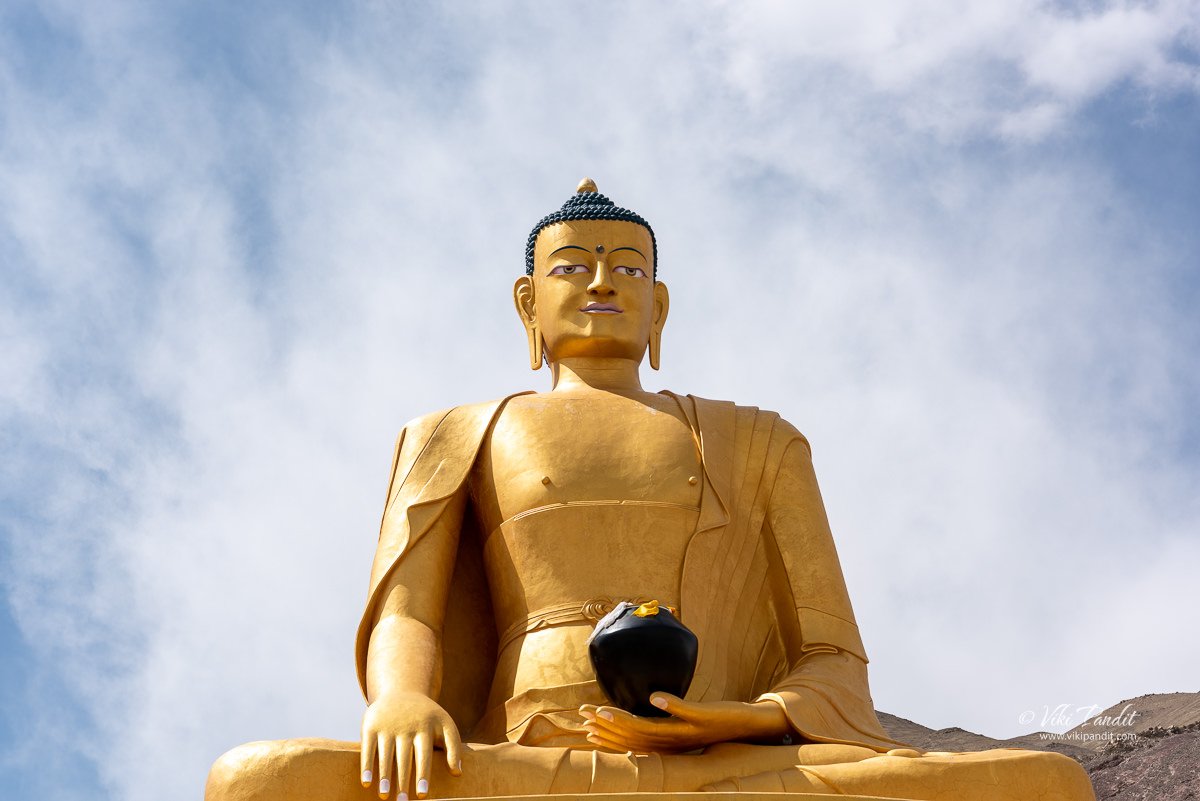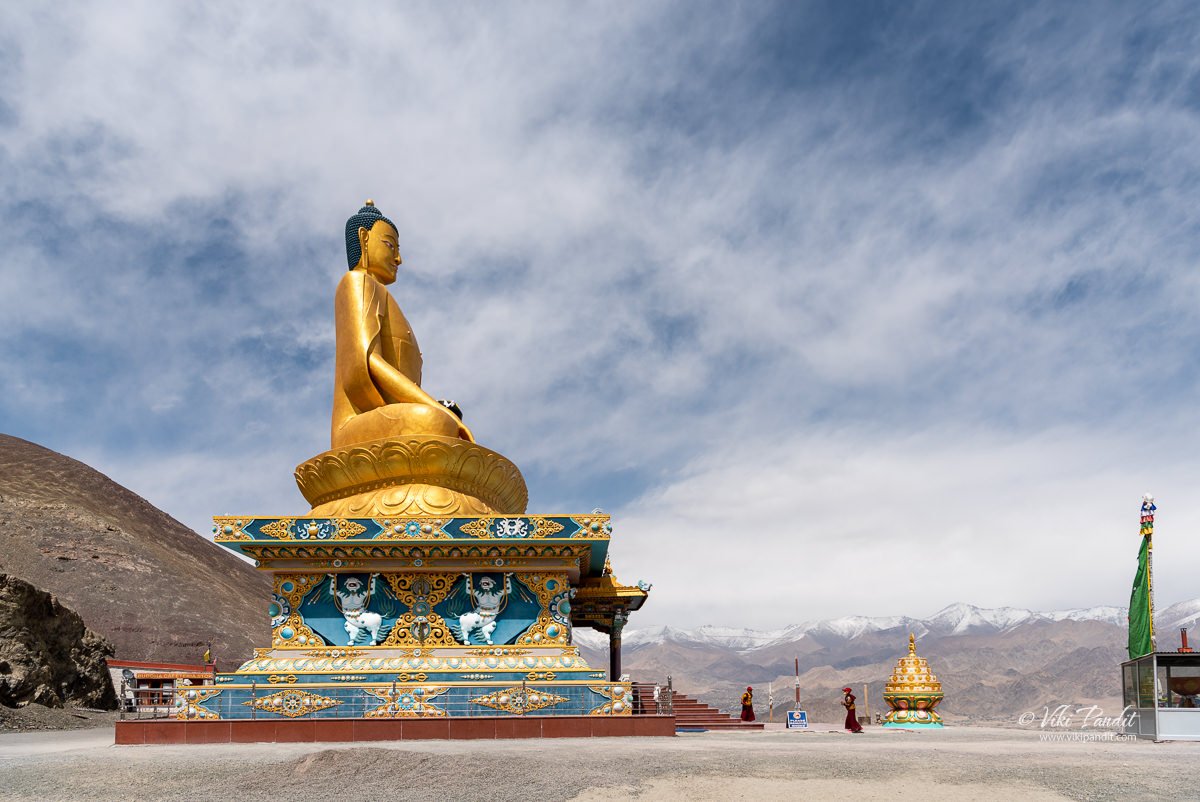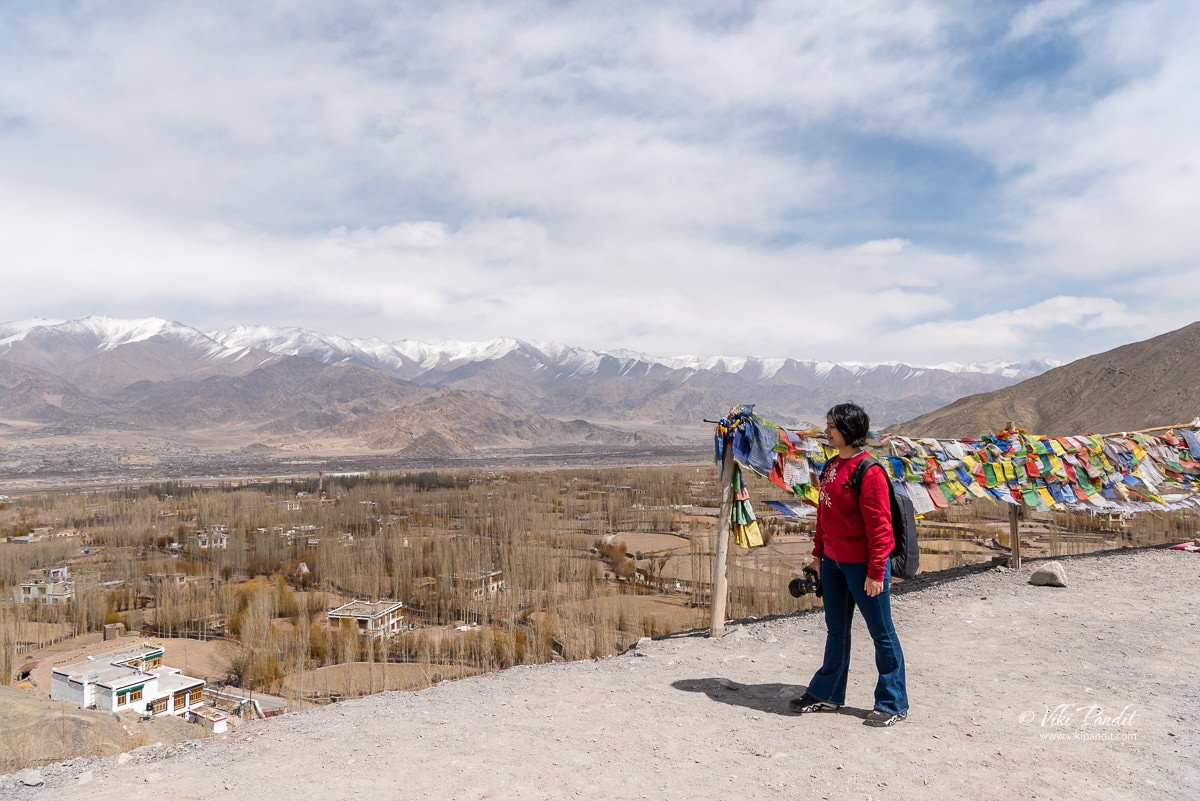Nestled in the picturesque landscape of Ladakh, the Stok Palace & Monastery stands as a profound reflection of the rich cultural heritage of this remote Himalayan region. Located approximately 15 kilometers from the bustling town of Leh, Stok Palace serves as the residential palace of the royal family of King Sengge Namgyal. Today, we will explore the fascinating history, architecture, and cultural significance of this magnificent palace and the adjacent monastery.
We had booked a cab for the entirety of the trip that would pick us up every day in the morning, right from our hotel. It was a great help as it helped us save time looking for rides on a daily basis. From Leh, Stok Palace can also be reached by local jeeps or through shared taxis. However, please note that you should make sure that you have some method of transportation to get back as well. It will be very difficult to get one-way transport back to Leh from Stok.
Brief History of Stok Palace
Commissioned in 1820 CE by King Tsepal Tondup Namgyal (1790-1841), the Stok Palace is situated opposite Leh on the other side of the river Indus. Tsepal Namgyal, the last independent Gyalpo (King) of Ladakh, inherited the throne when his elder brother died without any children. Tsepal was in every way opposite in character to his brother. He loved an easy life and was lazy in every respect. Despite his nuances, Ladakh flourished during his time, and the people enjoyed peace and happiness. He never went to battle throughout his reign until the Dogra army threatened the very existence of the Ladakhi way of life.
During his reign, the royal treasury had increased so much that the king decided to use it for building a new palace at Stok, also pronounced as “Stog” by locals. Stok, as people would describe was always a “dress colder” than Leh. While Leh Palace was the main seat of power, Stok Palace was built as a retreat for the ruling family. It was ironic that when the Dogra army arrived, led by Zorawar Singh around 1834, the king escaped and took shelter in this very palace he had commissioned.
Historically, Ladakh was an independent kingdom from about 950 CE until 1834, when Dogras from Jammu invaded it. The wool trade has held a significant position in the political history of Ladakh as was the primary interest of the Dogras. Although Ladakh was conquered by the Dogras in 1834, the state was not annexed until 1842. On his first assault on Leh, Zorawar Singh stayed in Leh for four months at the end of which he restored the kingdom of Ladakh back to Tsepal with an agreement that the kingdom would henceforth become a vassal state of the Dogra kingdom of Jammu.
But it was not long before Tsepal revolted against Zorawar. When the gyalpo learned of Zorawar Singh’s quick arrival at Chumri it was too late for him to do anything about it and he thought it wiser to receive the Dogra General outside Leh in all humility, expressing regret at what had happened. Besides extracting the installments of the war indemnity from Tsepal, he deposed him and installed Morupa Tadzi, the minister of Leh, as the gyalpo of Ladakh. Tsepal Namgyal, however, was allowed the village of Stok in Jagir. Tsepal Namgyal was the last independent king of Ladakh and remains much admired in the memories of the people of Leh.
The palace still serves as a summer home for the royalty of Ladakh from the Namgyal Dynasty. It is the only inhabited palace with more than 80 rooms, of which 5 are open to the public. The other two – Leh and Shey Palace are not liveable. While Leh Palace has been converted into a museum, the Shey Palace is in ruins.
A part of the building has been renovated and restored and turned into a heritage hotel. It offers discerning visitors a selection of four suites, a royal suite, and the queen’s bedroom. This magnificent four-story structure sits atop a vast hill surrounded by pebbles that descend from the peak. The palace seamlessly combines elements of both ancient and contemporary architectural styles, set amidst enchanting gardens and breathtaking panoramic vistas. The rooms are decorated in red, creme, and lapis lazuli blue adorned with Ladakhi motifs, rugs, and woodcarvings, with balconies overlooking the beautiful Indus Valley.
The central courtyard is dominated by an open space with a huge tarchen (flagpole). A staircase brings us to a smaller inner courtyard with a smaller tarchen, rooms on different sides, and a smaller staircase leading off to the various wings of the palace.
The Royal Palace comprises a four-story structure with a fine blend of architecture. The royal family is limited to top floors.
Guests staying at the Stok Palace Heritage Hotel have privileged access to the museum.
Although it is not as imposing as other palaces I have witnessed in India, it does command respect when compared to other surrounding structures. The site is famous for its well-laid gardens and visitors can also enjoy the amazing views of sunrise and sunset.
The palace organizes an annual festival of dance-mask (Cham) that enjoys huge participation by the locals. Visitors can also get to see some of the unique collection of crowns, royal attires, and other significant materials inside the palace. These lower floors were used as stables.
The mask dance known as Cham is a Buddhist dance performed by monks on the rythm of the dungchen(longhorn), gyaling(oboes), ngai(drums) and dung(conch shells), while wearing masks, some of which are fearsome while others are benign. The dance is religious in nature and it symbolizes the destruction of evil spirits.
Stok Palace also houses a must-see museum that has a collection of artifacts and relics related to Ladakh’s old monarchy. It offers a stunning collection of royal outfits, the crown, and other royal articles. One can see ancient coins, royal seals & costumes, jewelry, and photographs along with the royal family’s collection of thangkas, some of which are over 400 years old.
Royal Museum of Stok
Some of the major highlights of the Stok Palace museum are the Queen’s ancient yub-jhur or perak, which is a headpiece encrusted with 401 lumps of uncut turquoise, coral, gold nuggets and other precious stones; a 1,000 years old crown, and an actual knotted sword. The palace also has a temple where the guests are welcome to pay a visit. There are gold and silver teapots; and 35 ancient thangkas telling the Buddha’s story. Visitors can also see wooden blocks used to print prayer flags, and drums and trumpets made of human bone for use in tantric rituals. In one of the rooms is a sword whose blade has been twisted into a knot.
After grabbing some photos, we proceeded towards the Stok monastery, situated atop the hill about 2 kilometers away from the palace.
Hike to Stok Buddha
As we hiked towards the monastery, we could see dozens of chortens scattered all along the mountains. Among the most iconic and spiritually significant architectural elements in Ladakh are the white chortens, also known as stupas. Chortens are powerful symbols of the Buddhist faith. These distinctive structures are not only remarkable for their aesthetic beauty but also for their deep religious and cultural significance in the lives of the Ladakhi people.
Chortens have a long and storied history in Buddhism, dating back to the time of Siddhartha Gautama, the Buddha himself. They were originally built to house sacred relics and scriptures and to commemorate important events and figures in Buddhist history.
Over time, chortens spread across Buddhist regions, each incorporating unique local styles and traditions. In Ladakh, these chortens evolved into the beautiful white structures that grace the landscape today.
On the way, you can also catch this beautiful view of the Stok Palace standing mesmerizingly amidst the serene and awe-inspiring backdrop of the Stok Range of Mountains.
Stok Buddha
The history of Stok Monastery dates back to the 14th century CE when it was founded by Lama Lhawang Lotus. This historical connection adds an air of regal grandeur to the monastery, making it a site of cultural significance. The gompa is affiliated with Gelugpa or the Yellow Hat sect of Buddhism. One of the major attractions of the monastery is its impressive library which has 108 volumes of Buddha’s own discourses known as Kangyur.
The most striking feature of Stok Monastery is its architecture. Like most monasteries in Ladakh, Stok follows the traditional Tibetan architectural style. The main assembly hall or prayer hall, known as the Dukhang, is adorned with colorful murals, intricate woodwork, and statues of Buddhist deities. These artistic embellishments not only showcase the skill of local artisans but also provide visitors with a vivid glimpse into the world of Tibetan Buddhism.
It has various deities that are pictured inside along with 2 thrones that are for the Dalai Lama and his Lama. The central image that is seen here is of Avalokitesvara who has 11 heads and some 1,000 arms.
One of the highlights of the Stok Monastery is its impressive collection of Thangkas. Thangkas are intricately painted scrolls that depict various aspects of Tibetan Buddhist philosophy, cosmology, and religious figures. These Thangkas, some of which are centuries old, are a testament to the monastery’s commitment to preserving its cultural heritage.
The monastery serves as a center for religious rituals, festivals, and meditation practices. Monks residing at Stok Monastery follow the Gelugpa sect of Tibetan Buddhism, and their daily routines include prayers, chanting, and studying Buddhist scriptures. The monastery also plays a pivotal role in the cultural life of the region by hosting annual festivals, including the Stok Guru Tsechu, which draws crowds of devotees and tourists alike.
Beyond its religious and cultural significance, Stok Monastery offers visitors a serene escape from the chaos of modern life. Surrounded by breathtaking Himalayan vistas, the monastery exudes an aura of peace and serenity that makes it an ideal place for meditation and introspection. The tranquil environment, coupled with the spiritual ambiance, attracts travelers seeking solace and a deeper connection with themselves.
The history of the Golden Buddha Statue at Stok is deeply intertwined with the history of the Namgyal dynasty, the royal family of Ladakh. The Stok Monastery, where the statue resides, was founded in the 14th century and has been the residence of the Namgyal dynasty ever since. The statue itself, also known as the Sakyamuni Buddha or Shakyamuni Buddha, is believed to have been consecrated by King Sengge Namgyal in the 16th century, making it an invaluable relic that connects the royalty of Ladakh with their spiritual heritage.
The most striking aspect of the Golden Buddha Statue is, of course, its striking appearance. This statue which was started in 2012 and finished in 2015 was dedicated on August 8, 2016, by Tenzin Gyatso, who is the 14th Dalai Lama. Standing at an impressive height, the statue is crafted from gilded copper and is adorned with intricate ornamentation, jewels, and an aura of serenity that immediately captures the attention of anyone who beholds it. The golden hue of the statue not only represents the richness of the Buddhist faith but also symbolizes the illumination and enlightenment sought by Buddhist practitioners.
The craftsmanship and attention to detail displayed in the Golden Buddha Statue are nothing short of breathtaking. The statue’s facial features are finely chiseled, radiating compassion and wisdom. Its serene countenance, framed by an elaborate headdress, is a testament to the skill and dedication of the artisans who created it. The intricate designs adorning the statue’s robe and the precious jewels set into it add to its splendor, making it a true masterpiece of Tibetan Buddhist art.
Beyond its physical beauty, the Golden Buddha Statue holds profound spiritual significance. It is an embodiment of the historical Buddha, Siddhartha Gautama, who attained enlightenment under the Bodhi tree and dedicated his life to teaching the path to liberation from suffering. The statue’s presence in Stok Monastery serves as a constant reminder of the Buddha’s teachings and the path towards spiritual awakening.
For devotees and pilgrims who visit Stok Monastery, the Golden Buddha Statue is not just a work of art; it is a source of inspiration and a focal point for meditation and prayer. The statue’s serene expression and the aura of tranquility that surrounds it create an environment conducive to inner reflection and spiritual growth. Pilgrims often offer butter lamps, flowers, and prayers to the statue, seeking blessings, guidance, and inner peace.
A day trip from Leh is good enough to explore Stok Palace and the monastery. If you wish for a special experience you can also try to stay at the palace for a night. Spend the day soaking in the tranquility of the place – stroll around the palace, listening to the soothing sound of monks deep in prayers. Later you can enjoy the family museum with jewels, armor, and ‘thangka‘ collection of painted, embroidered ceremonial scrolls found in Buddhist monasteries.
Best Time to Visit Stok Monastery
The ideal months to visit the Stok is between May to October. However, if you wish to witness the local festivals you can try visiting in February.
Stok Guru Tsechu, the festival of Stok Monastery held in February/March, is a major crowd-puller. It is held on the 9th and 10th days of the first month of the Tibetan calendar.
Thanks for reading. Please leave your comments if you enjoyed my story or follow me on my journey as we drive to Kargil with Apricot blooms along the way.
